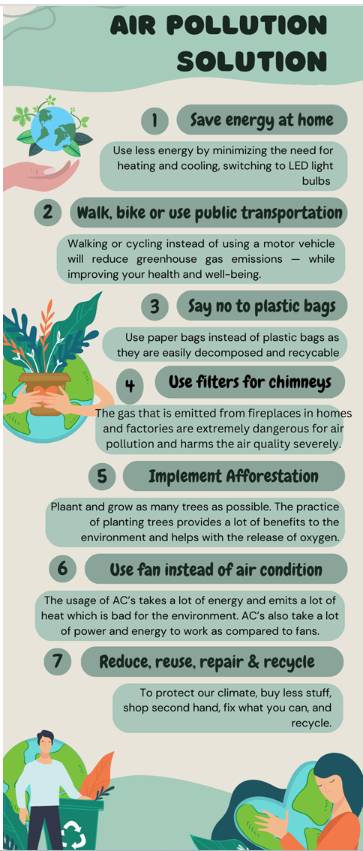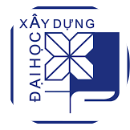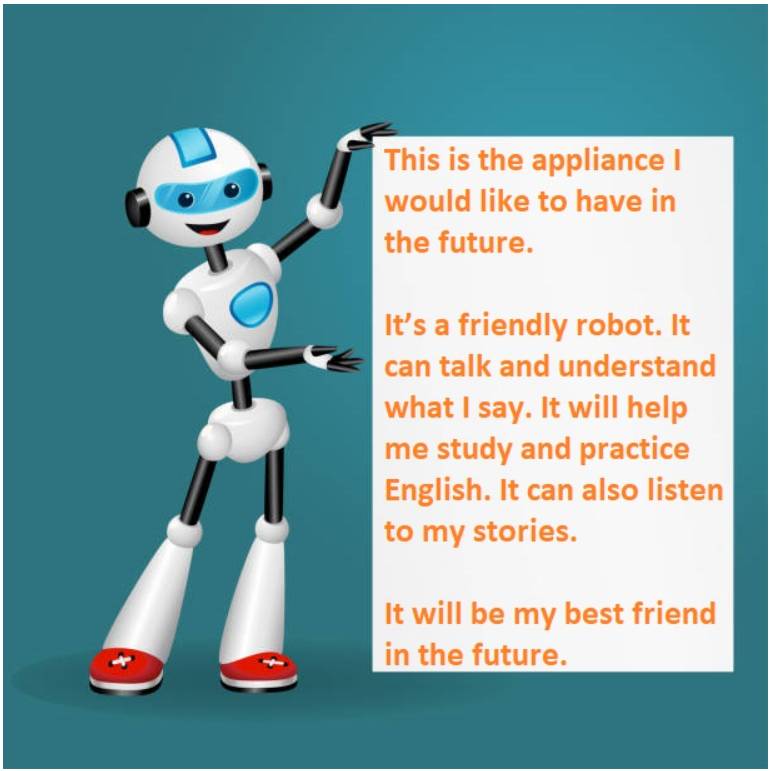Prepare a poster presentation on your future city. Use the information from your table in 1.

Những câu hỏi liên quan
The ideal city of the futureWork in groups. Design a poster of the ideal city of the future. Present your poster to the class. Use these questions as cues for your presentation.Where will it be located?How big will it be?How many people will live in it?How will people travel? What kind of buildings will people live in?
Đọc tiếp
The ideal city of the future
Work in groups. Design a poster of the ideal city of the future. Present your poster to the class. Use these questions as cues for your presentation.
Where will it be located?
How big will it be?
How many people will live in it?
How will people travel?
What kind of buildings will people live in?
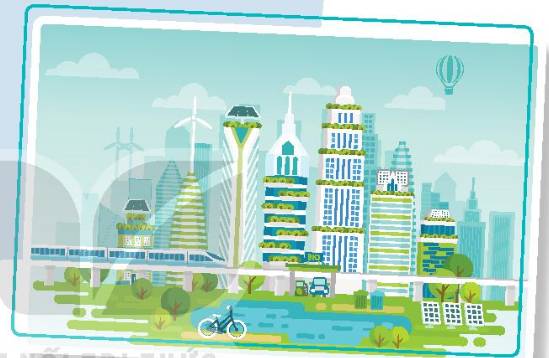

Hi everyone, welcome to our Dream city. It's located in the western Vietnam and has an area of 50 square kilometer. There are 3 million people here. The main transport is green car and motor bike. Besides, modern public transport system is also developed to avoid traffic jams. We utilize modern waste treatment so that the air is not polluted. We also grow a lot of trees, which results in fresh atmosphere around the city. Educational system is supported by high technology, robot teacher, and distance learning is popular among students. Citizens here can enjoy the best health care services in the world and they need to work only 7 hours a day.
Đúng 0
Bình luận (0)
think about an appliance you would like to have in the future. make a poster for your future appliance . write details about the appliance on the poster . share your poster with the class
tự nhiên hỏi câu chắc có liên quan
Đúng 0
Bình luận (0)
Nghĩ về một thiết bị mà em muôn có trong tương lai. Làm một áp phích cho thiết bị tương lai. Viết những chi tiết về thiết bị trên áp phích. Chia sẻ áp phích của em với lớp.
- Hi-tech fridge: keep food cool and cook your meal (giữ lạnh thức ăn và nấu ăn cho bạn)
- Robot: clean house, take care children, feed dogs and cats (lau nhà, chăm sóc trẻ em, cho chó và mèo ăn)
Đúng 0
Bình luận (0)
Xem thêm câu trả lời
Think about an appliance you would like to have in the future . Make a poster for your future . Make a poster for your future appliance . Write details about the appliance on the poster .
Help me !!!![]()
Nghĩ về một thiết bị bạn muốn có trong tương lai. Làm một tấm poster cho thiết bị tương lai của bạn. Viết chi tiết về thiết bị của bạn trên tấm poster.
Đúng 1
Bình luận (3)
THE COLOURS OF ASEAN (Sắc màu ASEAN)Work in groups. Find information about a member country of ASEAN. Present your research to the class. You can make a poster, a video, or presentation slides.Think about the following points:- General information (name, capital, currency, national flag, national animal/flower)- Geography (area, location)- Holidays (e.g. Independence Day. National Holiday)- People (population, culture, language(s) spoken, religions)
Đọc tiếp
THE COLOURS OF ASEAN (Sắc màu ASEAN)
Work in groups. Find information about a member country of ASEAN. Present your research to the class. You can make a poster, a video, or presentation slides.
Think about the following points:
- General information (name, capital, currency, national flag, national animal/flower)
- Geography (area, location)
- Holidays (e.g. Independence Day. National Holiday)
- People (population, culture, language(s) spoken, religions)
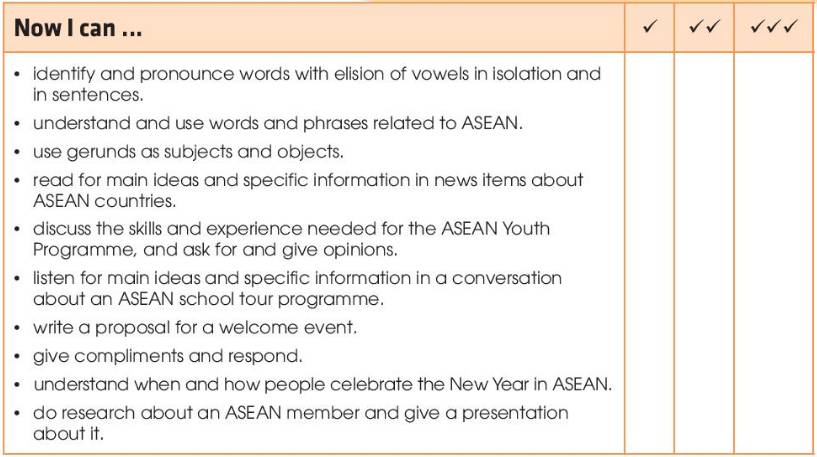
Located in Southeast Asia, Vietnam is a small and beautiful country with victorious history, profound patriotism and wonderful landscapes.
The Socialist Republic of Vietnam, widely known as Vietnam, is not a strange name to the whole world. Although this country is ravaged by a series of wars which cause serious damages, Vietnam in the eyes of the world is nice and peaceful. Vietnam is located in the eastern Indochina Peninsula in Southeast Asia, with Hanoi as its capital. With an area of 331,690 sq. kilometers, to the north of Vietnam is China, to the west is Laos and Cambodia, to the east is Gulf of Tonkin and East Sea, and to the south is Thailand Gulf. The land is a center of trading, cultural interaction, and even conflicts for centuries. It proves that Vietnam has an advantageous position in the region with long coastline and numerous attractions. Having a tropical climate, Vietnam is well known for from magnificent scenery and colorful hill tribes to wide terraced fields in Red River Delta and Mekong River Delta, to majestic mountains, and white sandy beaches. Vietnam, nowadays, is one of should-not-miss destinations in Asia.
Đúng 0
Bình luận (0)
Work in groups.
1. Choose a serious pollution problem in your area (noise pollution, air pollution, water pollution, ...). Suggest solutions to the problem.
2. Make a poster. Write your solutions on your poster. Use picture or illustrate / decorate your poster.
3. Present your poster to the class.

Exercise 1:
Air pollution is measured by a number called the Air Quality Index (AQI), which ranges from 0-500, with anything over 150 considered “unhealthy.” The World Health Organization considers any reading above 100 to be hazardous and recommends that people avoid prolonged exposure. While Vietnamese cities such as Hanoi and Ho Chi Minh City have AHI readings around 100 or higher, many provinces have far worse levels of pollution. In some areas of the south, where there are large rubber plantations and coal mines, AQI numbers can surpass 500.
(Ô nhiễm không khí được đo bởi một con số gọi là Chỉ số Chất lượng Không khí (AQI), có khoảng từ 0 đến 500, với bất cứ cái gì ở trên mức 150 sẽ được coi là “độc hại”. Tổ chức Y tế thế giới WHO cho rằng với mỗi lần đọc mà chỉ số trên 100 thì nghĩa là ở mức nguy hiểm và khuyến cáo mọi người tránh tiếp xúc lâu ở bên ngoài. Trong khi những thành phố ở Việt Nam như Hà Nội và thành phố Hồ Chí Minh đọc được chỉ số AHI khoảng 100 hoặc hơn, nhiều tính khác có mức độ ô nhiễm tệ hơn rất nhiều. Ở một vài vùng ở miền Nam, những vùng trồng cao su và mỏ than thì chỉ số AQI có thể vượt qua 500.)
Some simple way to reduce air pollution
(Vài cách đơn giản để giảm thiểu ô nhiễm không khí)
1. Using public transports
(Sử dụng phương tiện công cộng)
2. Turn off the lights when not in use
(Tắt điện khi không sử dụng)
3. Recycle and reuse
(Tái sử dụng và tái chế)
4. Say no to plastic bags
(Nói không với túi nhựa)
5. Reduction of forest fires and smoking
(Giảm thiểu cháy rừng và hút thuốc)
6. Use of fans instead of air conditioner
(Sử dụng quạt thay vì điều hòa)
7. Use filters for chimneys
(Sử dụng tấm lọc cho ống khói)
8. Avoid usage of crackers
(Tránh sử dụng pháo ống)
9. Avoid using of products with chemicals
(Tránh sử dụng các sản phẩm chứa nhiều chất hóa học)
10. Implement afforestation
(Tiến hành trồng rừng)
Đúng 0
Bình luận (0)
Exercise 3:
As we can know, air pollution is measured by a number called the Air Quality Index (AQI), which ranges from 0-500, with anything over 150 considered “unhealthy.” The World Health Organization considers any reading above 100 to be hazardous and recommends that people avoid prolonged exposure. While Vietnamese cities such as Hanoi and Ho Chi Minh City have AHI readings around 100 or higher, many provinces have far worse levels of pollution. In some areas of the south, where there are large rubber plantations and coal mines, AQI numbers can surpass 500. So, what can we do to improve our air quality? Here are some simple way to reduce air pollution.
The first one is saving energy at home. You can save energy by reducing the need for heating and cooling in your house and replace normal light bulb to energy saving fluorescent lights to help the environment.
The second one is using public transport or walking or riding bike whenever you can. Doing that will not only reduce the carbon emission but also help saving money. Also, walking or riding bike is good for your health.
Next is saying no to plastic bags. The use of plastic products could be very harmful to the environment as they take a very long time to decompose, due to their material made up of oil. The use of paper bags instead is a better alternative as they decompose easily and are recyclable.
Implementing afforestation is also a way to lessen air pollution. There are a lot of volunteer group plating forests every year but we can practice it at our home by plant a tree or make a garden in the yard. Trees helps release oxygen and make the atmosphere cooler.
The next one is use fan instead of air conditioner. The usage of AC’s takes a lot of energy and emits a lot of heat which is bad for the environment. AC’s also take a lot of power and energy to work as compared to fans.
Finally, we reduce, reuse, repair and recycle. We should buy less stuff and buy second hand, fix what you can and recycle. This helps save a lot of money and protect the environment.
Tạm dịch:
Như chúng ta đã biết, ô nhiễm không khí được đo bởi một con số gọi là Chỉ số Chất lượng Không khí (AQI), có khoảng từ 0 đến 500, với bất cứ cái gì ở trên mức 150 sẽ được coi là “độc hại”. Tổ chức Y tế thế giới WHO cho rằng với mỗi lần đọc mà chỉ số trên 100 thì nghĩa là ở mức nguy hiểm và khuyến cáo mọi người tránh tiếp xúc lâu ở bên ngoài.
Trong khi những thành phố ở Việt Nam như Hà Nội và thành phố Hồ Chí Minh đọc được chỉ số AHI khoảng 100 hoặc hơn, nhiều tính khác có mức độ ô nhiễm tệ hơn rất nhiều. Ở một vài vùng ở miền Nam, những vùng trồng cao su và mỏ than thì chỉ số AQI có thể vượt qua 500. Đây là vài cách đơn giản để giảm thiểu ô nhiễm không khí.
Đầu tiên là tiết kiệm điện ở nhà. Bạn có thể tiết kiệm năng lượng bằng cách giảm nhu cầu sưởi ấm và làm mát trong nhà và thay bóng đèn thường thành đèn huỳnh quang tiết kiệm năng lượng để bảo vệ môi trường. Thứ hai là đi phương tiện công cộng hoặc đi bộ hay đạp xe bất cứ khi nào có thể. Thực hiện việc đó có thể làm giảm khí thải cacbon mà còn tiết kiệm tiền. Đi bộ và đạp xe cũng giúp cải thiện sức khỏe. Thứ ba là nói không với túi ni-lông. Việc sử dụng túi ni lông rất có hại cho môi trường vì chúng rất khó phân hủy, do nhựa được làm từ dầu mỏ. Sử dụng túi giấy là một biện pháp thay thế tốt vì dễ phân hủy và có thể tái chế. Trồng rừng cũng là một cách để giảm ô nhiễm không khí. Hằng năm có rất nhiều nhóm tình nguyên tham gia trồng rừng nhưng chúng ta có thể thực hiện ở nhà bằng cách trồng cây hoặc làm một khu vườn. Cây cối giúp tạo ra oxi và giúp bầu không khí trở nên mát mẻ hơn. Tiếp theo là sử dụng quạt thay vì dùng điều hòa. Sử dụng điều hòa tốn nhiều năng lượng hơn và tỏa ra nhiều nhiệt, điều này có hại cho môi trường. So với quạt thì điều hòa cần rất nhiều năng lượng để hoạt động. Cuối cùng là giảm thiểu, tái sử dụng, sửa chữa và tái chế. Chúng ta nên mua ít đồ hơn, mua đồ xách tay, sửa chữa những gì có thể và tái chế. Điều này giúp tiết kiệm tiền và bảo vệ môi trường.
Đúng 0
Bình luận (0)
project unit 10
think about an appliance you would like to have in the future. Make a poster for your future appliance. Write details about the appliance on the poster. Share your poster with the class.
Lưu ý: không chép trên mạng nha, vẽ giùm mình poster lun nha.
I will have a robot . It will help me do my homework, take care of my dog , and sometimes it will bring me outdoor such as to the zoo, cinema ,park… to lower stress. It will share my housework , and it will become my best friend in the future.
Đúng 2
Bình luận (0)
My future applianceI have a robot. It’ll help me to water the flowers in the garden.1. Think about an appliance you would like to have in the future.2. Make a poster for your future appliance.3. Write details about the appliance on the poster.4. Share your poster with the class.
Đọc tiếp
My future appliance
I have a robot. It’ll help me to water the flowers in the garden.
1. Think about an appliance you would like to have in the future.
2. Make a poster for your future appliance.
3. Write details about the appliance on the poster.
4. Share your poster with the class.
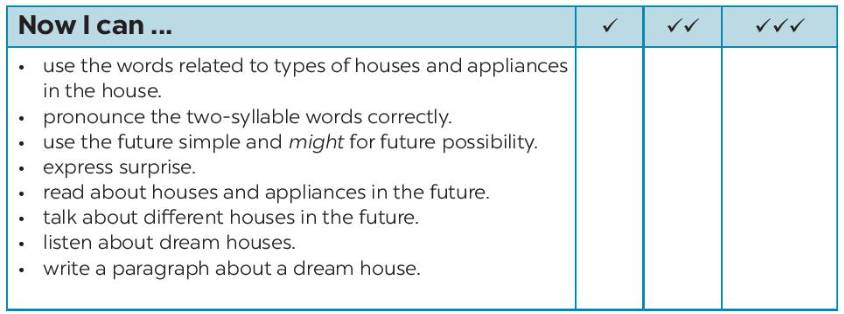
This is the appliance I would like to have in the future. It’s a friendly robot. It can talk and understand what I say. It will help me study and practice English. It can also listen to my stories. It will be my best friend in the future.
Đúng 0
Bình luận (0)
Tạm dịch:
Đây là thiết bị tôi muốn có trong tương lai. Đó là một robot thân thiện. Nó có thể nói và hiểu những gì tôi nói. Nó sẽ giúp học tập và thực hành tiếng Anh. Nó cũng có thể lắng nghe những câu chuyện của tôi. Nó sẽ là người bạn tốt nhất của tôi trong tương lai.
Đúng 0
Bình luận (0)
Make a presentation to show the results of your survey. Use technology or make a poster. Use pictures. Write sentences. Then upload your work to your teacher.
Here are some examples showing how you could present the results.
Work In groups. Tell your partners about your future house. You can use the information in 4.
Example:
My future house will be a palace. It'll be on the Moon.
There'll be a super smart TV in the house. It'll help me to talk to my friends on other planets.
My future house will be a very big and beautiful villa. It’ll be on the hill. There will be ten rooms with smart appliances in each room. They will help us do all the housework easily and quickly.
(Ngôi nhà tương lai của tôi sẽ là một ngôi biệt thự rất to và đẹp. Nó sẽ ở trên đồi. Sẽ có mười phòng với các thiết bị thông minh trong mỗi phòng. Họ sẽ giúp chúng ta làm mọi công việc nhà một cách dễ dàng và nhanh chóng.)
Đúng 0
Bình luận (0)
Work in groups. Choose a type of heritage that you are interested in and propose ways to preserve it. Present your ideas to the class in the form of an oral presentation, a leaflet, or a poster. Use these questions as cues.1. What is the heritage? Where is it? Is it cultural or natural heritage? 2. What is it famous for?3. How important is it?4. What can we do to preserve it?
Đọc tiếp
Work in groups. Choose a type of heritage that you are interested in and propose ways to preserve it. Present your ideas to the class in the form of an oral presentation, a leaflet, or a poster. Use these questions as cues.
1. What is the heritage? Where is it? Is it cultural or natural heritage?
2. What is it famous for?
3. How important is it?
4. What can we do to preserve it?

Cultural heritage is imperative. Culture is what defines us and what separates us from animals. To preserve the artifacts of our history for those that will come after us is a difficult task. There are many possible ways of doing so; in this essay, I am going to discuss two of them.
One way is to increase the budget of museums. This would allow them to become better equipped with tools that could be used to preserve their exhibits. It would also allow them to enrich their exhibition. However, museums may well become just another form of entertainment for young people, not teaching them why it is important to care about our history.
Another idea is to educate the young on the matter. This could make them do the job when we have long been gone. This may not give immediate results, but it would certainly be effective when looking at the problem in the big picture. We cannot forget that organizing an effective program can prove to be difficult to be implemented.
I trust the second option represents the approach that should be chosen. After all, history is about long-term solutions, and what future generations will do is just as important as our actions. Turning museums into pure entertainment, which is what might happen if the method mentioned in the second paragraph is applied, will render them devoid of the function we expect them to have.
Đúng 1
Bình luận (0)










